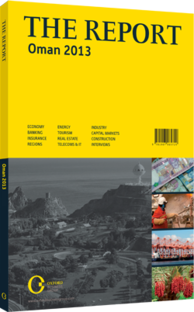Power-up: The Salalah region will see improvements to its electricity grid
As economic activity continues to expand outside of the capital, steps are being taken to meet a growing demand for increased infrastructure. One notable example is the effort to expand power generation capacity in Salalah, the capital of the Dhofar region.
In The System
The Salalah System, which covers the city of Salalah as well as neighbouring areas, is one of three primary power systems in the sultanate. According to the Oman Water and Power Procurement Company (OPWPC), the Salalah System was servicing roughly 63,000 customers as of March 2012. The system is composed of an integrated generation, transmission and distribution network owned and managed by the Dhofar Power Company (DPC), an independent power plant owned and operated by the Rural Areas Electricity Company, and a recently completed independent water and power project (IWPP). The DPC is the system's only power supplier. While it now operates in isolation, work is under way to connect the Salalah System with Petroleum Development Oman’s (PDO) grid, used by PDO to power its oil exploration and development projects in Oman’s central region.
A state-owned entity, the OPWPC is the sole procurement body in the country and is also responsible for forecasting expected power and water needs in Oman. According to the OPWPC's recent forecasts, peak electricity demand in the Salalah System should jump from 348 MW in 2011 to almost 700 MW in 2018, representing overall growth of nearly 100%. The OPWPC also predicts an annual growth rate for peak and average demand of approximately 10% over the same period.
Running The Odds
A “high-case” scenario, which takes account of greater industry demand for electricity, has also been developed by the OPWPC. In this forecast, the OPWPC estimates peak demand in Salalah to reach 1041 MW in 2018. The scenario includes a substantial surge in demand in 2014-15 when a potential customer from the industry sector may increase electricity requirements by 150 MW. The OPWPC anticipates that annual growth for peak and average power demand in this scenario would be around 17%. In light of the possibility of slower investment growth, the OPWPC has developed a “low-case” scenario, which predicts an annual growth rate for demand of 7% over 2011-18.
The procurement body also estimates that, under this scenario, peak demand would top out at 571 MW in 2018. While lower than expected, the scenario would still increase demand by 65% over the same period.
One significant change for the power supply sector in the Salalah area will be the decommissioning of the Port of Salalah’s radioisotope thermoelectric generators (RTGs), which are used currently to power operations at the port. Electricity supplied by the 70 or so RTGs will be provided instead by the electric grid, and the transition from the RTGs to the grid should be completed by the end of 2013 or early 2014.
Works In Progress
With electricity requirements climbing steadily as customers such as the Port of Salalah connect to the grid, two major projects are increasing capacity. An IWPP developed by Sembcorp Salalah Power and Water Company (SSPWC) became fully operational in May 2012 and is providing power and water to the Salalah System via a purchase agreement with the OPWPC. The agreement will last 15 years, and the $1bn gas-fired plant operates with a power capacity of 490 MW, according to Sembcorp, SSPWC's largest shareholder. The first two phases of the project finished in July 2011 and early 2012, respectively.
The final phase was completed in mid-2012.
A second power facility should come on-line in the next several years. Referred to as the Salalah Independent Power Project (IPP) 2, the facility is still in planning stages. The OPWPC reports, however, that the new IPP should produce somewhere between 200 MW and 300 MW of power, and work is expected to move quickly on the project in order to take advantage of the rapid infrastructure, industrial and tourism development in the area. Tendering for the planned IPP is set to occur in 2013, and if this is completed by the end of 2013, the project should be finished during 2016.
You have reached the limit of premium articles you can view for free.
Choose from the options below to purchase print or digital editions of our Reports. You can also purchase a website subscription giving you unlimited access to all of our Reports online for 12 months.
If you have already purchased this Report or have a website subscription, please login to continue.

